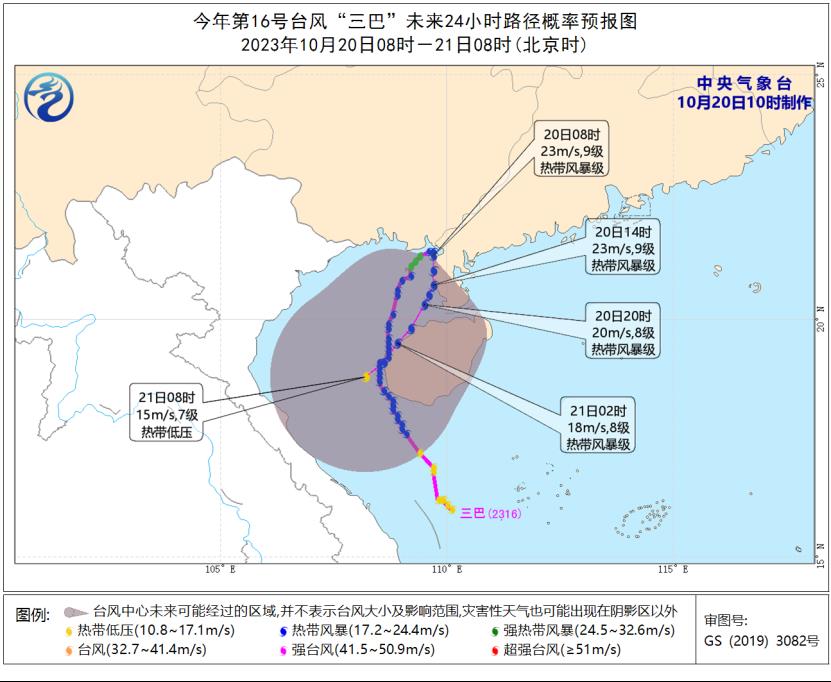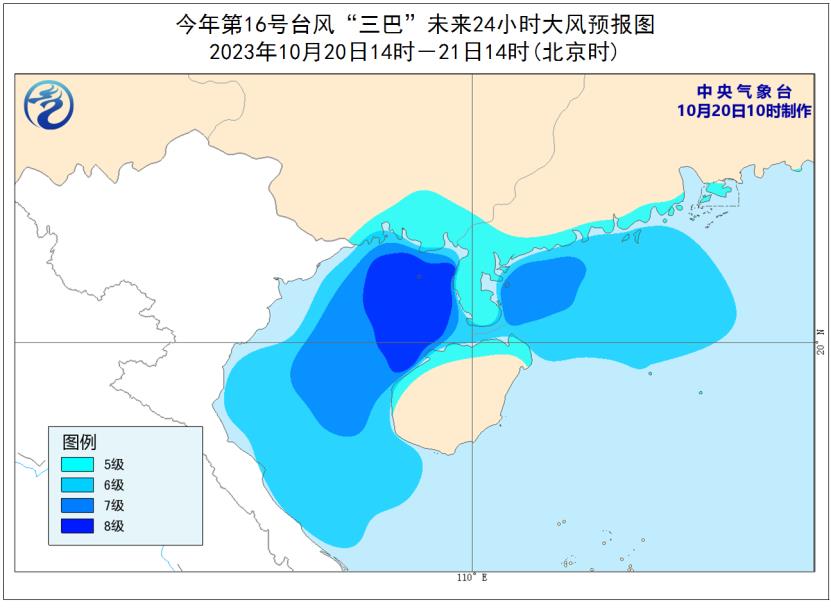The Central Meteorological Observatory continued to issue a typhoon blue warning at 10: 00 on October 20.
CCTV News:The Central Meteorological Observatory continued to issue a typhoon blue warning at 10: 00 on October 20:
This year’s No.16 typhoon "Sanba" (tropical storm level) landed again at the coast of Suixi County, Guangdong Province around 9: 45 am today (20th). At the time of landing, the maximum wind force near the center was 8 (20m/s), and the lowest pressure in the center was 995 hectopascals. At 10 o’clock in the morning, its center is located in Suixi County, which is 21.1 degrees north latitude and 109.7 degrees east longitude. The maximum wind force near the center is 8 (20 m/s), and the lowest pressure in the center is 995 hectopascals.
It is estimated that "Sanba" will move southwards at a speed of about 10 kilometers per hour, and approach the coastal area in the northwest of Hainan Island, and its intensity will gradually weaken.
Gale forecast:From 14: 00 on the 20th to 14: 00 on the 21st, there will be 6-8 winds in the northwest of the South China Sea, Beibu Gulf, Qiongzhou Strait, the central and western coastal areas of Guangdong, the coastal areas of Guangxi, and the northern and western coastal areas of Hainan Island, with gusts of 9-10.
Precipitation forecast:From 14: 00 on the 20th to 14: 00 on the 21st, there were heavy rains in parts of southern South China, among which there were heavy rains (100-240mm) in parts of southeastern Guangxi and southwestern Guangdong. Some of the above areas are accompanied by short-term heavy rainfall (the maximum hourly rainfall is 20-50 mm, and the local area can exceed 80 mm), and there are strong convective weather such as thunderstorms and strong winds.
Defense guide:
1. The government and relevant departments shall, in accordance with their duties, do a good job in typhoon prevention and emergency rescue.
2. Water operations and passing ships in relevant waters should return to Hong Kong to take shelter from the wind, strengthen port facilities, and prevent ships from anchoring, grounding and collision.
3. Stop large-scale indoor and outdoor gatherings and dangerous outdoor operations such as high altitude.
4. Reinforce or dismantle structures that are easy to be blown by the wind. Personnel should not go out at will. They should stay in windproof and safe places as far as possible, so as to ensure that the elderly and children stay in the safest place at home, and the dangerous people will be transferred in time. When the typhoon center passes by, the wind will decrease or stay still for a period of time. Remember that the strong wind will suddenly blow and you should continue to stay in a safe place to avoid the wind.
5. Relevant areas should pay attention to prevent flash floods and geological disasters that may be caused by heavy precipitation.


